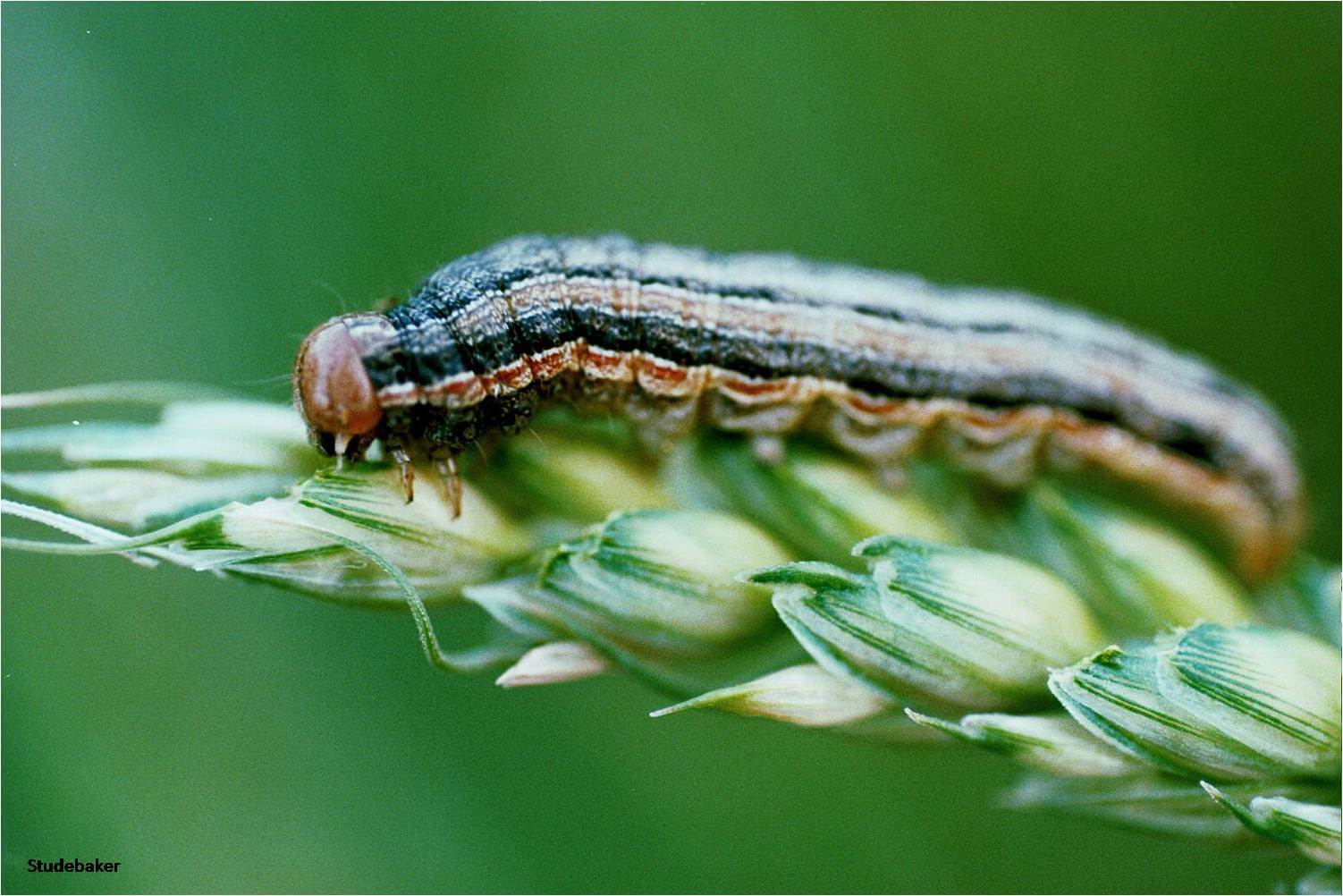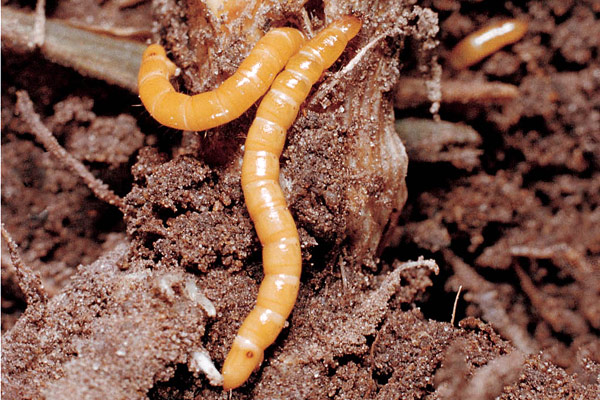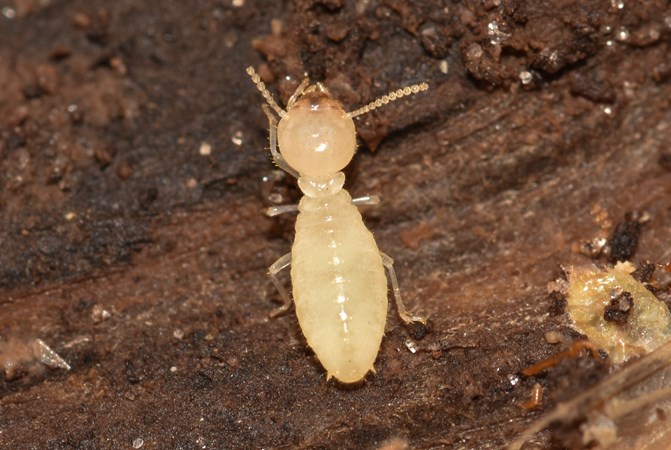1. Pink borer - Sesamia inferens
The larvae are pinkish, smooth cylindrical body about 25mm.The moth is straw colored with stout body. These are nocturnal and lay eggs on leaves or on the ground. Damage in wheat are dead heart in young plants and are killed together, older plants are killed leaving few grains only.
MANAGEMENT:
- Removal of plants showing early damage symptoms: removal and destruction of infested plants from the base
- Use of Bacillus thuringiensis @3gm/lit.
- Use of biopesticides: Release of Trichogramma chilonis at rate of around 5o thousand to 1 lakh per hectare.
- Use of safe chemical pesticides/ Seed and At-Planting Insecticide Treatments:
- To fields showing greater than 5 % dead heart symptoms, spray with 875 ml Triazophos 40 EC or 1.25-2.5 liters of chloropyriphos 20EC in 500-1000 liter of water.
2. Army worm - Mythimna separate 
Armyworms are occasionally a problem in corn, especially in weedy fields, in fields near severely infested small grain, and in no-tillage corn. The adults are pale brown while larvae are voracious, dull-white, green. It causes naked(skeletonized), cut crops. Maximum infestation occurs at rise of spring and also damages inflorescence, ear, grains.
MANAGEMENT:
- Manual operations: handpicking of large caterpillars, beetles and egg masses and use of sweep nets, wire gauges etc.
- Use of safe chemical pesticides/ Seed and At-Planting Insecticide Treatments:
- form pit around field and sprinkle Malathion 5% ; Chloropyriphos 1.5%
- spray 500 ml dichlorovous 85SL @3 kg of carbaryl 50 WP or 1 lit of Quinalphos 25 EC in 500 lit water per ha.
3. Wireworms - Agriotes Spp. 
Wireworms look wiry with conspicuous segments. The adult click beetles have two characteristic rear-facing pointed corners of pronotum. The pests reduce germination rate by feeding on germinating seed , damaging or eliminating a potential plant. Wireworms may also injure corn by feeding on soft stem and root tissues underground.
MANAGEMENT:
- Crop rotation including alfa-alfa and high glucosinolate or use of Brassica spp.
- Use of trap crops: trap crops used for maize could include wheat.
- Use of biopesticides: Release of Trichogramma chilonis at rate of around 1 lakh per hectare and use of fungi like Metarrhizium, Beauveria.
- Destruction of pest harbouring places.
4. Termites - Odonotermes obesus/Microtermes obesi 
These are important pests in wheat. These are delicate white bodies with light brown head around 3-6 mm long. They cause destruction of germinating grains. Hollow main primary root beneath the soil filled with soil, tunnels found along the shoot filled with soil is seen.
MANAGEMENT:
- Destruction of pest harbouring places: destroy the stubbles, weed and possible alternate hosts of pests like stem borer through different cultural practices
- Locating termitarium for removal
- Use of safe chemical pesticides/ Seed and At-Planting Insecticide Treatments:
- Seed treatment with Chloropyriphos @6ml/kg of seed.
- Soil application of Chloropyriphos 50 EC @10ml/l as a soil drench at sowing time in termite prone soil.
- Use Chloropyriphos 10 G @ 1 kg per ropani before sowing in heavily infected area
- Us of kerosene as an alternative.
